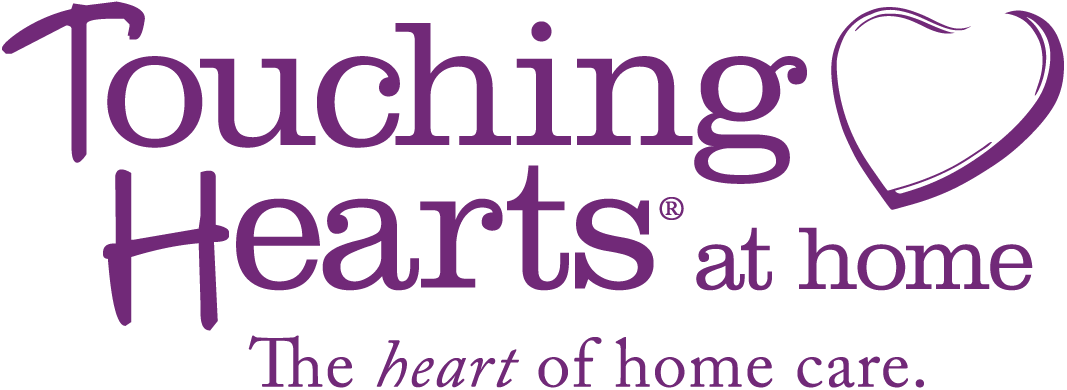As one of the most essential yet strained segments of healthcare, the direct care workforce is not […]
Home health care can be a high-stress occupation.
Most caregivers work long hours, in sometimes poor conditions, to provide bathing, dressing, feeding, and cleaning, plus much-needed companionship and emotional support to their patients.
Despite this, one in six home health care workers in New York City and nearly one-quarter of home care workers across the U.S. live below the federal poverty line.
Unfortunately, stress has become a more significant issue during the COVID-19 pandemic and exacerbated the challenges they already faced.
For instance, although many hospitals secured sufficient PPE, a lot of health care agencies were left woefully short, which placed caregivers in a difficult situation.
It’s a situation that’s not likely to improve any time soon.
It’s expected that an estimated 70% of adults age 65 and older will need some form of basic home care assistance. But healthcare agencies are struggling to recruit caregivers not because people don’t want to do the job but because they can’t afford to.
With high turnover and high demand, healthcare agencies need to retain the people they’ve already trained – and that means helping to manage and reduce caregiver stress.
What Are the Signs of Caregiver Stress?
As a healthcare agency owner, it’s easy to focus on your clients so closely that you forget to pay close attention to the health and well-being of your staff.
But it’s important to keep an eye on your caregivers and make sure they’re not displaying any signs of stress like becoming easily irritated or angry, gaining or losing weight, or having frequent headaches or other aches and pains.
Too much stress, especially over a long time, can have a detrimental effect on their health. For example, not eating a balanced diet can increase the risk of heart disease and diabetes.
Here are some of the common signs and symptoms of caregiver stress you need to look out for:
- Irritability, anxiety, and depression.
- Feeling overwhelmed or constantly worried.
- Feeling sluggish and tired.
- Getting too much or not enough sleep.
- Overreacting to minor issues.
- Displaying new or deteriorating health problems.
- Concentration issues.
- Getting frustrated and angry.
- Eating, drinking, or smoking more.
- Abusing alcohol or drugs, including prescription medications.
- Overlooking responsibilities.
- Losing interest in leisure activities.
If you fail to notice the signs and symptoms of caregiver stress and things go unchecked, then it can eventually lead to burnout – a state of severe physical, mental, and emotional exhaustion. And at that stage, both the caregiver and the patients they’re caring for suffer.
Risk Factors for Caregiver Stress
Caregivers face unique risks, including overexertion, infections, verbal abuse, and unhygienic conditions. Plus, they face transport-related risks as they commute between patients.
Furthermore, home healthcare workers may encounter stressors that hospital or inpatient healthcare workers don’t have to deal with. For example, they are not directly supervised, generally work alone, and may travel through unsafe neighborhoods.
Here are the top risk factors for caregiver stress:
Unpredictable working conditions
As home care workers (HCWs) move from patient to patient, they encounter various working conditions that are unpredictable and unpleasant.
For starters, there’s the patients and their families. As most patients are aging or suffering chronic pain and slowly deteriorating, they can become depressed, confused, or irrational, and direct verbal abuse toward HCWs. Family members also take out their frustration on HCWs if they feel their loved one is deteriorating or they’re unable to care for them as they would wish.
And then there’s the buildings. HCWs may face unsanitary conditions, hostile pets, temperature extremes, or find water utilities shut off.
Unsanitary homes may harbor pests such as rodents, lice, bedbugs, or mites, spreading disease and infection to patients and HCWs. Some dwellings may have no running water. And, depending on patients’ preferences or financial constraints, homes may be too warm or cold.
Unpredictable schedules
Unpredictable schedules are especially tough for working parents. Working hours can vary from day to day, and caregivers may need to fill in for a colleague at the last minute, making it hard to plan ahead.
In the health care sector, there are significant discrepancies between the planned schedule and reality. Even in well-run nursing homes, it’s not uncommon for one out of every three shifts to be unpredictable – i.e. someone works when they weren’t scheduled, or someone was not at work when scheduled.
Staffing shortages in general often result in longer shifts and fewer days off.
High pressure
Caregivers earn low-to-moderate wages, yet they work in a high-pressure environment. Many are solely responsible for multiple patients' care and have to negotiate heavy traffic conditions to arrive on time for their next patient.
Patient death
Home care workers (HCWs), including caregivers, home health aides, personal care aides, and other direct care workers, provide essential care and support to older, disabled, and seriously ill people in their homes. But as more of their patients are aging and eventually dying at home, HCWs also have to provide end-of-life (EOL) care.
Coping with and managing death is challenging for everyone. But sadly, the majority of HCWs receive almost no training on EOL issues and are left to cope with this stressful experience as best they can.
Personal injury or illness
Although home care workers provide care to injured and ill patients, they’re also susceptible to personal injury or illness.
According to PubMed, most HCW injuries are caused by overexertion and falls (63%). Unsurprisingly, motor vehicle accidents caused 13.5% of injuries to HCWs as they commuted between their patients.
As well as injuries, HCWs suffer from various illnesses and infections, including COVID, as they care for patients every day.
Caregivers also have to deal with patients’ pets, so animal bites and scratches or tripping over pets in the home are all additional risks they encounter.
Financial difficulties
Most home care workers (HCWs) earn low wages and may be employed only part-time.
Among the 2 million home care workers working in the U.S. – most of them women and people of color – the median wage is $24,000 a year.
Two-thirds of home care workers work part-time or for a portion of the year because client needs vary from a few hours per week to 24/7 and are subject to change.
Low incomes mean nearly one-quarter of home care workers (24%) live in households below the federal poverty line, compared to 9% of all U.S. workers.
And because poverty rates are high among home care workers, more than half rely on some form of public assistance.
How Can Employers Help Caregivers Manage Stress?
Home healthcare agency owners can help their caregivers manage and reduce stress by offering competitive wages and benefits, along with ongoing training, supervision, and support.
Provide quality supervision and support
Employers should offer caregivers consistent and accessible support and supervision so that they can work safely and effectively.
However, many caregivers are unsure who their supervisor is or have more than one, which leads to confusion.
In order to overcome the daily challenges and empower caregivers to thrive in their roles, supervisors must be accessible to their team, establish clear and consistent communication, and support problem-solving.
Provide adequate training and ongoing education
There is little job advancement for caregivers, but access to training and ongoing education could counteract that.
Training can help them prepare for and respond to stressful situations like caring for patients with dementia or heart disease, or providing end-of-life care.
Employers can make training convenient by offering online sessions and ensuring caregivers complete their annual training compliance requirements.
Note: These requirements will vary from state to state. For example, the caregiver training requirements in California and Florida are different from New York and Massachusetts.
Invite employees to share their feedback and concerns
Managers can create a “culture of connection” by checking in with staff regularly. Asking employees to open up and share their feedback and concerns goes a long way to relieving stress. The fact that caregivers have someone to talk to, who listens and advises, is reassuring when they spend so much time unsupervised. Even if managers don’t have the answer immediately, they can listen and empathize.
Ensure scheduling allows time for lunch breaks and travel to/from work
Like any other type of worker, caregivers need regular breaks – whether that’s a quick coffee break or an extended lunch break. They also need adequate time to travel to and from work, which is typically patient homes.
If you don’t allow time for breaks and travel, then you’re introducing an unnecessary stressor. So make sure you consider everything when you’re creating the next schedule.
Create and explain policies about worker safety
Employers should create and explain policies about worker safety, including protection from violence, injury, and illness. Consider the following:
- Is there an active safety program with a safety manager and a safety committee that includes employees from across the company?
- Does training include safety hazards and prevention?
- Does training include information on latex allergies?
- Has an infection control and prevention plan been developed?
- Has a pandemic influenza/COVID plan been developed?
- Are workers taught how to identify stressors and reduce stress?
- Do workers have access to counseling support?
- Are workers taught how to recognize violent or aggressive behavior and how to diffuse an angry patient?
- Are workers trained how to identify verbal abuse and what to do about it?
- Are workers taught safe driving skills?
Provide counseling support or other mental health resources
One of the best ways that employers can help caregivers manage stress is through peer networks and mentors.
During their first few months, home care workers need a robust induction plan and a peer mentor who can help answer their questions, address their concerns, understand their new role, and develop their knowledge and skills.
In the long run, peer mentors and peer support networks can continue to offer regular support and guidance to their fellow caregivers and build a culture of belonging.
Offer competitive wages and benefits
Many home care workers (HCWs) feel underpaid and undervalued in their high-risk jobs. Compared to registered nurses (with a median income of $73,300), caregivers live in near poverty with a median income of $29,640. Furthermore, many HCWs are independent contractors rather than employees, making them ineligible for paid sick leave.
Agency owners can end this situation by offering competitive wages and benefits such as personal protective equipment, hazard pay, paid sick leave, training, and career progression.
Improve recruitment
Given the current and expected growth in demand for caregivers, agency owners need to improve their recruitment programs to ensure adequate staffing levels.
Here are three ways to attract more candidates:
- Set up an employee referral program. Current employees often know friends they could introduce. All agency owners have to do is offer a reward when they hire a referred candidate.
- Use online recruitment sites. Post job openings on career-focused websites, niche websites, and company review sites, and take advantage of the built-in screening tools to attract suitable candidates.
- Provide training as a benefit. Removing the barrier of qualifications like a Home Health Aide Certificate (C.H.H.A) will increase the number of candidates. Agencies can onboard new hires with online training like CareAcademy’s Caregiver education platform.
Get the Support You Need
CareAcademy offers convenient online training for administrators and employees.
Agency administrators can advance their leadership with high-quality NAB-approved administrator CEUs. At the same time, caregivers can improve their proficiency and ability to provide expert-level, quality care with specialized certifications. Some employee training courses are eligible for college credit.
Bottom line: Managers become better at what they do, and employees are fully engaged as they learn the skills that can help them advance in their careers and earn a higher salary.






